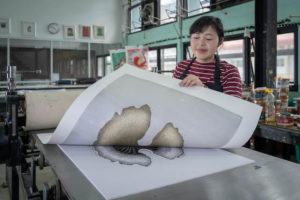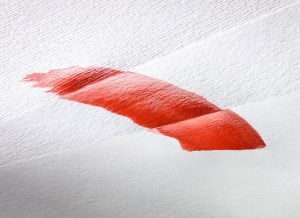Introduction
In the world of fine art and photography, giclee printing has become a popular method for creating high-quality reproductions with vivid colors and exceptional detail. This printing process has transformed the way artists and photographers reproduce their work for exhibitions or personal collections. In this article, we will explore the definition, brief history, evolution, and importance of giclee printing.
Definition of Giclee Printing
Giclee printing refers to a high-quality inkjet printing process that uses archival inks to produce museum-quality prints. The term “giclee” was coined by Jack Duganne in the early 1990s when he was working on developing this new form of digital fine art printmaking. The word “giclee” is derived from the French word “to spray,” which accurately describes how the ink is applied to the paper during the printing process.
Brief History and Evolution of Giclee Printing
The origins of giclee printing can be traced back to 1980 when digital imaging technology was first developed. However, it wasn’t until the 1990s that giclee printing began to gain popularity as an alternative to traditional printmaking methods such as lithography or serigraphy.
Initially, giclee prints were created using early-generation large-format printers that produced relatively low-resolution images with limited color gamut. Over time, advances in inkjet technology led to improved resolution and color accuracy, making giclee prints virtually indistinguishable from traditional fine art prints.
Importance and Benefits of Giclee Printing
The importance of giclee printing lies in its ability to reproduce artwork or photography with exceptional detail and accuracy while maintaining archival quality standards. Unlike traditional printmaking methods that require large print runs to be cost-effective, giclee printing allows artists and photographers to produce prints in smaller quantities without sacrificing quality. Another benefit of giclee printing is its versatility in terms of print size, paper type, and finishing options.
Artists and photographers can choose from a wide range of paper types such as fine art papers, canvas, or photo papers to achieve the desired look and feel for their prints. Additionally, giclee prints can be finished with various coatings such as UV-resistant or matte finishes to provide additional protection against fading or damage.
Giclee printing has emerged as a valuable tool for artists and photographers seeking to reproduce their work with exceptional detail and accuracy. Its ability to combine the advantages of digital technology with traditional fine art printmaking techniques has transformed the way we think about printing art.
Understanding Giclee Printing
The Process of Creating a Giclee Print
Giclee printing is a high-quality digital printing process that produces accurate and long-lasting reproductions of artwork or photographs. The process starts with the creation of a digital file from the original artwork or photograph.
The file is then printed on an inkjet printer using fine-art paper, canvas, or other materials. One of the key features of giclee printing is its ability to produce prints with vibrant colors and sharp details.
This is achieved through the use of advanced inkjet printers that can create droplets as small as 1/100th the diameter of a human hair. These printers also use multiple cartridges with different colors to achieve a wider gamut than traditional printing methods.
Materials Used in the Process
The quality of giclee prints depends on several factors, including the type of printer, ink, and paper used in the process. For example, fine art paper with high cotton content can produce rich colors and deep blacks that are characteristic of giclee prints. Similarly, archival-grade inks can ensure that prints remain vibrant for decades without fading or deteriorating.
In addition to paper and ink, other materials used in giclee printing may include coatings for protecting prints from moisture or UV light. Some printers may also use specialized software for color management or image enhancement to ensure that prints accurately reflect the original artwork.
Comparison Between Giclee and Traditional Printing Methods
Compared to traditional printing methods such as lithography or screen printing, giclee offers several advantages in terms of color accuracy, resolution, and longevity. For example, lithography uses flat plates to transfer images onto paper but can result in slight variations between each print due to plate wear over time.
In contrast, giclee uses a digital file as its source material which ensures that each print produced is identical to the original image. Similarly, screen printing uses stencils to apply ink onto paper but is limited in terms of color accuracy and resolution.
Giclee, on the other hand, can produce prints with resolutions up to 1440 dpi and can accurately capture even subtle variations in color and tone. Overall, giclee printing offers a modern and versatile alternative to traditional printing methods that can produce high-quality digital reproductions of artwork or photographs.
Advantages of Giclee Printing
High-quality prints with vibrant colors and sharp details
Giclee printing is the preferred printing method for artists, photographers, and designers who demand high-quality results. The process uses high-resolution digital scans to produce prints with a level of detail that far surpasses traditional printing methods.
The printer sprays millions of tiny droplets of ink onto the paper, creating a reproduction that captures the original artwork’s texture and color. One significant advantage of giclee printing is the color accuracy it offers.
Unlike other forms of printing where the colors can be dull or inaccurate, giclee prints have vibrant hues that match the original artwork closely. This is possible because giclee printers use a much wider range of colors to create each print, resulting in beautiful reproductions that are almost identical to the original artwork.
Moreover, giclee printing produces exceptionally sharp details in every print. Every stroke or line from an artist’s brushstroke or pen stroke can be seen in stunning detail when it comes to printed form; this attention to detail enhances any image’s beauty and makes it more interesting for viewers.
Long-lasting prints that resist fading
Giclee prints are known for their longevity; they resist fading and discoloration over time. Unlike traditional prints made with dye-based inks which tend to fade after a few years’ exposure to sunlight, giclee prints use pigment-based archival inks which have been tested to last up to 100 years before exhibiting any signs of fading or deterioration. This means that these prints can last several generations without losing their quality due to exposure; thus, they are perfect for those seeking exceptional quality pieces that will stand the test of time.
Versatility in terms of print size, paper type, and finishing options
Another advantage offered by giclee printing is its versatility. Giclee prints can be produced in various sizes, paper types, and finishing options.
The size of giclee prints can range from small to large, depending on the desired dimensions. Moreover, this type of printing is compatible with different paper types such as fine art paper, watercolor paper, and canvas that can add texture or enhance color quality.
Finishing options include matt or glossy finishes, and also the option to frame your giclee print according to your preference. Therefore, the versatility in size, material, and finish is perfect for artists who want their works displayed in different ways or people looking for a unique touch for their home decor.
Applications of Giclee Printing
Art reproduction for galleries and museums
Giclee printing has revolutionized the way art is reproduced for galleries and museums. With its precision and accuracy, giclee printing allows for high-quality reproductions of original artwork that capture all the nuances and details of the original.
Museums can create multiple prints of artwork that can be sold in their gift shop without compromising on quality or authenticity. Furthermore, giclee printing allows the artwork to be printed on demand, allowing for greater flexibility in exhibitions.
Rather than having to display the original piece in every exhibition, museums can simply print a high-quality reproduction using a giclee printer. This means that precious artworks can remain safely stored away while still being enjoyed by visitors.
Photography printing for exhibitions or personal collections
Giclee printing has also become the go-to method for photography reproductions due to its ability to produce incredibly detailed prints with rich colors and fine tonal graduations. Photographers have discovered that giclee printing provides them with a cost-effective way to produce limited edition prints of their work without sacrificing quality.
For photographers exhibiting their work, giclee prints offer a level of consistency across all prints that is essential when showcasing a series or collection of work. Additionally, photographers producing fine art prints for personal collections know they are investing in pieces that will last a lifetime due to the archival properties inherent in giclee printing.
Fine art printing for interior design or home decor
Interior designers recognize the value of fine art when it comes to transforming spaces into something truly special. Giclee prints offer an affordable option when it comes to displaying beautiful pieces throughout homes, offices, or commercial spaces. With endless possibilities available from size options, paper types, and finishing options, designers can create unique pieces tailored to any interior design scheme.
Artwork can be printed on a variety of mediums such as canvas, metal or wood to create unique and striking pieces that make an impact in any space. Giclee printing has also given artists the ability to offer their work to a wider audience without compromising on quality, making it accessible for everyone to appreciate and enjoy fine art in their own homes.
Choosing the Right Giclee Printer
A. Factors to Consider When Selecting a PrinterWhen it comes to selecting the right giclee printer for your printing needs, there are a number of factors to consider.
These factors include the intended use of the printer, budget, and your specific printing needs. One important factor to consider is the intended use of the printer. If you’re planning on using your giclee printer for fine art reproduction or photo printing, then you’ll likely need a high-end professional-grade model that can produce high-quality prints with accurate color reproduction and sharp details. On the other hand, if you’re planning on using your giclee printer for home decor or personal use, then a mid-range consumer model may be suitable. Budget is another important factor to consider when selecting a giclee printer. Professional grade models can be quite expensive and may not be feasible for everyone’s budget. However, there are also more affordable consumer models available that still offer excellent print quality and versatility. Your specific printing needs will also play a role in determining which giclee printer is right for you. Do you need a large format printer capable of producing prints up to 44 inches wide? Do you require certain paper types or finishing options? Take some time to evaluate your needs before making a decision.
B. Popular Brands in the market There are several popular brands in the market when it comes to giclee printers:
- Epson has been one of the leading brands in digital printing technology for many years and offers several high-end professional-grade giclee printers designed specifically for fine art reproduction and photography printing.
- Canon also offers several professional-grade models designed for fine art printing as well as more affordable consumer models suitable for personal use.
- HP offers a range of giclee printers designed for both home and professional use, with options suitable for printing on a variety of media types.
When selecting a giclee printer, it’s important to do your research and select a reputable brand known for producing high-quality products. Take the time to compare features, read reviews, and evaluate your options based on your budget and specific needs.
Caring for Your Giclee Prints
Proper Handling Techniques to Maintain Quality Over Time
Once you have invested in a high-quality giclee print, it’s important to handle it with care to ensure its longevity. Here are some tips on how to handle your giclee prints properly:
- Always handle the print with clean hands or gloves to avoid transferring oils or dirt onto the surface. 2. Store your prints flat and avoid rolling them up for a long period as it may cause creases or damages in the paper.
- Use acid-free and archival materials when working with your prints; this includes matting boards, mounting hinges, and framing materials. 4. Protect your prints from direct sunlight and UV light exposure by displaying them in areas that receive low light levels, away from any heat sources.
Tips on Framing, Matting, and Displaying Your Prints
Framing and displaying your giclee prints is crucial for their protection as well as enhancing their visual appeal. Here are some helpful tips on how to frame, mat, and display your giclee prints:
- Choose frames that complement the artwork without overpowering it by matching the color tone or style of the piece. 2. Use an acid-free mat board between the print and frame glass; this will prevent any chemicals from damaging the artwork over time.
- Consider using UV-protective acrylic instead of glass in frames as they are more lightweight and shatterproof while still providing protection against fading due to UV rays. 4. Mounting your print onto a foam board can help keep it flat while also providing extra support during framing.
- When displaying multiple pieces of art together, ensure that there is enough space between each piece as overcrowding can be overwhelming for viewers while also increasing their chances of being damaged due to bumping into one another. By taking proper care of your giclee prints and using high-quality materials when framing and displaying them, you can ensure their longevity while also enhancing the visual appeal of your artwork.
Conclusion
Recap on the importance and benefits of giclee printing
Giclee printing offers a superior quality of print reproduction that is unmatched by traditional printing methods. It produces high-quality prints with vibrant colors and sharp details while offering versatility in terms of print size, paper type, and finishing options. Giclee printing also provides long-lasting prints that resist fading compared to other forms of printing.
Aside from the technical benefits, giclee printing has become an essential tool for artists, photographers, and creators looking to reproduce their work with accuracy and precision. It enables them to showcase their work to a wider audience while maintaining the integrity of their original vision.
Final Thoughts
Giclee printing has revolutionized the art world by making high-quality reproductions accessible to artists and collectors alike. Its ability to produce fine art prints with rich colors that last for decades has made it a preferred method over traditional forms of printmaking. The technology behind giclee printing continues to evolve, making it easier than ever for individuals to take advantage of this innovative method of reproduction.
With its versatility in terms of materials used in the process plus a range of finishing options available such as framing or mounting techniques, giclee prints are ideal for both commercial use and personal projects. The future looks bright for giclee printing as more creatives recognize its potential impact on their work.
As technology continues to advance, we can expect even more exciting developments in this field. For those seeking exceptional quality prints that stand the test of time- giclee printing is definitely worth considering!




